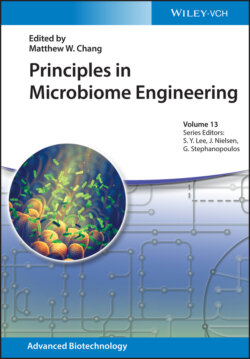Читать книгу Principles in Microbiome Engineering - Группа авторов - Страница 53
1.4.2.1 International and Local Initiatives
ОглавлениеThe established infrastructures kickstarted various local and global initiatives to accelerate microbiome research. These include databases and research platforms founded by universities, research institutions, and major corporations. These initiatives study diverse research work, focusing on particular human societal niches. Listed below are some of such initiatives.
HMP [286]: The first‐phase HMP (HMP‐1) (2008–2013) is a concerted global effort that investigates samples of donors and studying the microbiome of 15–18 sites of the human body. These microbial taxonomic profiles and metagenomic sequences, described in the form of abundance, lay the foundations for the HMP‐2.
HMP‐2: The second phase of the HMP, also known as the integrated HMP (iHMP), uses the Data Analysis and Coordination Center (DACC) platform to facilitate rapid data retrieval of metagenomic sequence and other data types of the human microbiome and human genetics.
METAgenomics of the Human Intestinal Tract (MetaHIT): MetaHIT (2008–2012) is a European Union initiative that links 15 institutes from 8 countries, providing a multi‐disciplinary and extensive catalogue of microbiome resilience potential in the human body [287]. MetaHIT was succeeded by the Horizon2020 (2014–2020) that advances research in microbiome nutrition and host health.
The Microsetta Initiative (TMI): TMI consolidates the global efforts of profiling the microbiome of collected human samples from across the globe, including educational outreach of microbiome sciences [288]. TMI is the human microbiome research wing of the Earth Microbiome Project.
Million Microbiome of Humans Project (MMHP): Launched at the 14th International Conference on Genomics (ICG‐14) in 2019 [289], the MMHP is global cooperation between scientists from China, Sweden, Denmark, France, Latvia, and other countries studying microbial metagenomics research. This project aims to sequence and profiles the microbiome of one million samples isolated from the human body, to ultimately construct a complete human body microbiome map and build the world's largest human microbiome database using MGI's DNBSEQ™ metagenomic sequencing [290].
Bioinformatic initiatives: The most prominent bioinformatic initiative is the DACC [291] that plays a crucial role in iHMP. The Global Catalogue of Metagenomics (gcMeta) is another bioinformatics platform that archives microbiome data while facilitating data standardization and analysis [55].
Various governments and their affiliated health institutes have initiated many national‐level microbiome projects to encourage microbiome research. In Ireland, the government‐funded Metagenomics of the Elderly programme (ElderMet) investigates the relationship between diet, gut bacteria, and health status in the elderly [292]. The Canadian Institutes of Health Research (CIHR) launched the Canadian Microbiome Initiative (CMI) in 2014 aiming to analyze and characterize the microorganisms that colonize the human body in an effort to harness the microbiome for treatment of chronic disease [293]. In 2017, the second phase of CMI was launched, aiming to develop effective preventative and therapeutic interventions through a deeper understanding of the causational role of the microbiome in human health and disease. The Japanese Human Metagenome was established to study the gut microbiome of healthy Japanese and its microbial diversity, comparing with metagenomic data from HMP [294].
